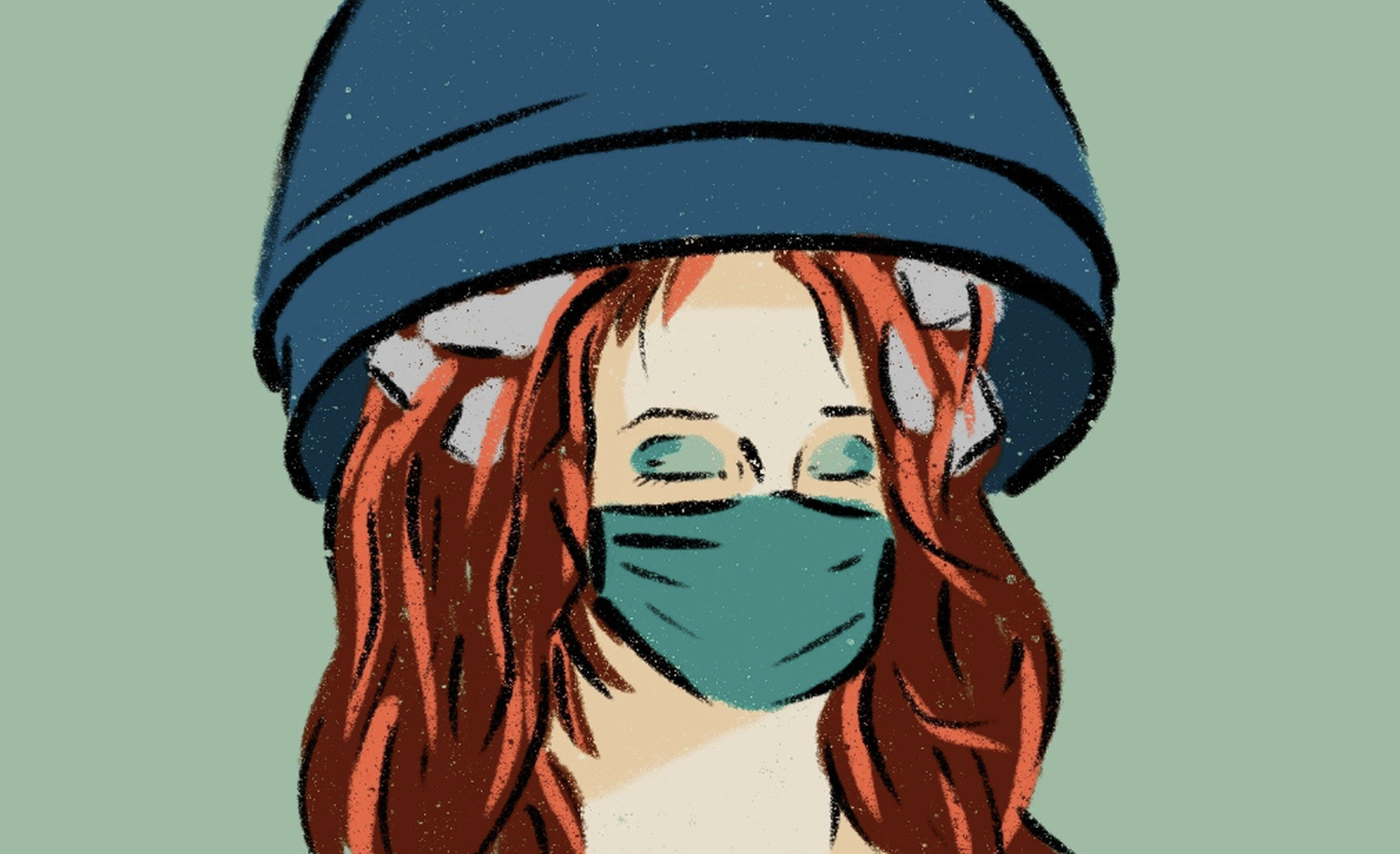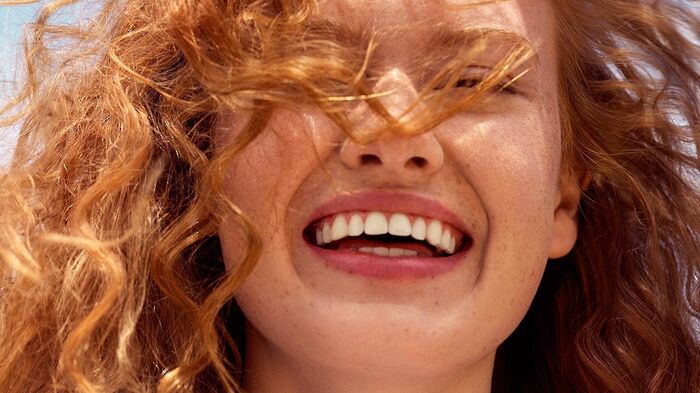My friend Una* meets me for a walk around our local park, dressed in a matching peach-coloured tracksuit set, made fabulous by its celestial print and built-in corset. Accessorised with silver hair, a glittery eye-liner, and more necklaces than I can count, she looks as fashion-forward as ever; as far as beauty is concerned, I will always maintain that it is her world and we are just living in it, doomed in our quest to keep up. It is late December, London has just entered Tier 4, and our local salon - at which Una has worked part-time for almost as long as it has existed - has just closed its doors for the third time this year.
“Just before we shut, we dropped like £400 on christmas decorations, and now no one’s going to see them, they’ll just be put in a box until next year,” she tells me, “If they warned us in advance we could have called all our clients and moved their bookings earlier, we could have made space”. Her despondence is understandable - like many local businesses, Una’s salon is reliant on a boost in income during the holiday season, and this year the period was more important than ever.
Beauty - which typically contributes £6.6 billion a year to the UK economy - is now an industry in crisis. UK cosmetics sales reported a £1.7bn decline in 2020, with major supermarkets opting to stop stocking make-up due to a lack of customer interest, in a phenomenon labelled the ‘lipstick index’. It has now been revealed that 40% of beauty salons are struggling to cover costs since reopening after the first lockdown, with 92% of salons feeling Covid-19 to have had a ‘significant impact’ on business.
For Una’s salon, the consequences are immeasurable: “When we were shut, we were shut, we didn’t get much help from the government at all. We still had to pay business rates, we still had to pay rent on the building, we didn’t get any kind of help in that sense”. She also admits that furlough “wasn’t great, if I’m honest”, noting the disproportionate effects of government measures on local beauty businesses across all three lockdowns. She uses the word ‘frustrating’ more times than I can count in our conversation, her main concern being that “we’re so careful, we sanitise everything, and capacity has been reduced by more than half, yet we’re the ones suffering from Oxford Street being so open and unregulated. And these are big corporations that can stay afloat through online sales, but it’s not like we can do a takeaway haircut”.
“big corporations can stay afloat through online sales, but it’s not like we can do a takeaway haircut”
Under the new conditions of opening, the salon was forced to interpret and adapt to a host of new regulations, including the provision of PPE for staff and customers. And of course, with new rules comes new resistance. “These days most people just get on with it,” Una reassures me, although at first “lots of people would complain or not adhere to marked socially distanced spaces”. Then she reconsiders “we still get a lot of people taking their masks off and then I ask them to put it back on and then two minutes later it’s off again”. A recent study based in the United States suggested that women were up to 1.5 times as likely to adhere to wearing a mask than their male counterparts.“And it is mainly men” Una tells me, “I think they assume because of the style of their haircut they can’t wear one, but actually we can do your cut with a mask on. It’s really annoying, and obviously there’s only so many times I can remind clients to put them back on,”. It is this “mindset of pleasing the customers” that seems the crux of the problem, in conflict with the reality “I’m not getting paid enough to get covid,” she laughs.
After the first lockdown, “a lot of people were more confident in complaining about things, and often they were completely out of our control, like reduced capacity or another client’s lateness delaying their cut”. As always, the biggest problems were a question of money. Una divulges that “when we re-opened, we upped our prices a bit. We’re the cheapest salon in the area, and actually we still are the cheapest, yet people - and I know this sounds weird but it’s never people of colour or young people, it’s always like older white women or blokes - really want to haggle over a five pound price difference”. Una suggests general economic pressure, as well as the mentality of customer entitlement created by schemes such as ‘Eat Out to Help Out’, and the devaluing of beauty services as a result of enforced, prolonged closures that has contributed to this unappreciative mood.
“The rules were so clearly weighted in men’s favour, it was utterly ridiculous”
For Una, this degradation of her industry feels intensely gendered, for “there was so much more fuss about barber’s shutting than hair salons and nail bars”. Barbers and hairdressers reopened after the first lockdown on the 4th July, whereas beauty salons - despite initially being promised the same date - could not do so until the 13th. And what about when the salon could reopen? “The rules were so clearly weighted in men’s favour, it was utterly ridiculous. We weren’t allowed to use the hair dryers indoors, which personally I did think made sense, luckily we had a garden so we could take people outside and do it in the open air. But then we couldn’t do threading because it was on the face, even though we were allowed to do beard trimming for men. So men were allowed to come into the salon and take their masks off whilst we trimmed their beards, yet we weren’t allowed to thread a woman’s eyebrows with both of us in masks”. She notes a further discrepancy in the rules: “when we were in tier 3, the blow dry rule didn’t come back into effect, which is so weird because if it was so important in summer, you think it’d be just as - if not more - now. But somehow they’ve just scrapped that rule, which just shows the weirdness of it all”.
Since re-opening in the midst of a pandemic, Una’s job description has essentially doubled in length, and it is clear as she talks that this constant navigation of contradictions, of juggling conflicting pressures from the government and customers, has taken its toll. “In terms of new stuff I have to do, instead of just wiping the surfaces down and sweeping the floor, now we have to wash all the towels with disinfectant every single time, which we only use for aesthetic reasons anyway. Usually we’d just tumble dry them, but now everything has to be cleaned with bleach after every use,” she explains, “we’re constantly throwing things in and out of the washing machine. In our bathroom we have to use one-use hand towels, which constantly need topping up. And then throughout the day every station has to be completely disinfected, which makes everything take 5 minutes longer, we can’t just have one in one out - you go through bottles of disinfectant so quickly”.
“what happens when the importance of appearance is challenged, and a service historically regarded - especially for women - as ‘essential’, is explicitly branded as not-so?”
And of course, all these extra tasks have a very literal cost too: “When we first reopened we had to use one-use gowns for everything, which was a lot financially. And then of course we buy all the cleaning and protective products, which is a massive expense, and our water bill is just through the roof”. Balancing these extra costs with appeasing clients was of course far from easy, as safety precautions effectively rubbed away at the more social side of the job, of the casual conversation traditionally associated with a trip to the hairdressers. Una admits: “it is very expensive and exhausting covering everything, which is why we upped our prices, maybe up by like a fiver across all our services. People were really annoyed about it, but we were literally just covering the cost of keeping them safe, we weren’t pocketing any of it”. It is clear that the past year has drastically altered the relationship between employees and clients, particularly in an industry so reliant on people-pleasing, and ultimately on keeping up appearances. But what happens when the importance of appearance is challenged, and a service historically regarded - especially for women - as ‘essential’, is explicitly branded as not-so?
After the first lockdown, there was a notable difference in the kinds of treatments clients desired; Una recalls that “we had very few big jobs, it was just a lot of wash and cuts, and some root touch-ups”. It is more than possible that the pandemic has changed standards and expectations not simply in the context of safety, but of beauty: of what it looks like, and of what it means to provide it. Una feels this shift in attitude herself, as whilst her own personal relationship with the beauty industry hasn’t changed (before we meet, she calls me to let me know she is running late, distracted by a new eyeshadow palette), this year has allowed her to reflect on the weirdness of “working in a business that literally relies on people feeling insecure about how they look - I’m not saying that’s all it is, but as a base that’s what changing your appearance is based on. It creates a weird conflict that’s very hard to wrap my head around. We love making people feel beautiful, but I do get caught up by the fact that a lot of the things we offer as a beauty salon are things that are just cultivated out of, like, nothing. We literally make money from people coming in to get hair removed off their face, it sometimes is really weird to think about”. She is aware how much the past year has shook the world of beauty, of the increasing relevance of that million dollar question: “Is this something people want to do for themselves or is there a level of obligation involved?”.
But Una is not interested in such a tired paradox, especially as it often comes dripping in misogyny. She decides instead that - in spite of the current pandemic-induced lull - “I do feel like to some extent there’s less care about how people look these days, but then on the flip side when we do a really nice job and someone looks gorgeous, that happiness is still important”. Given that visiting a beauty salon remains the third most anticipated post-lockdown activity, I think she’s probably right.
*Names have been changed.


